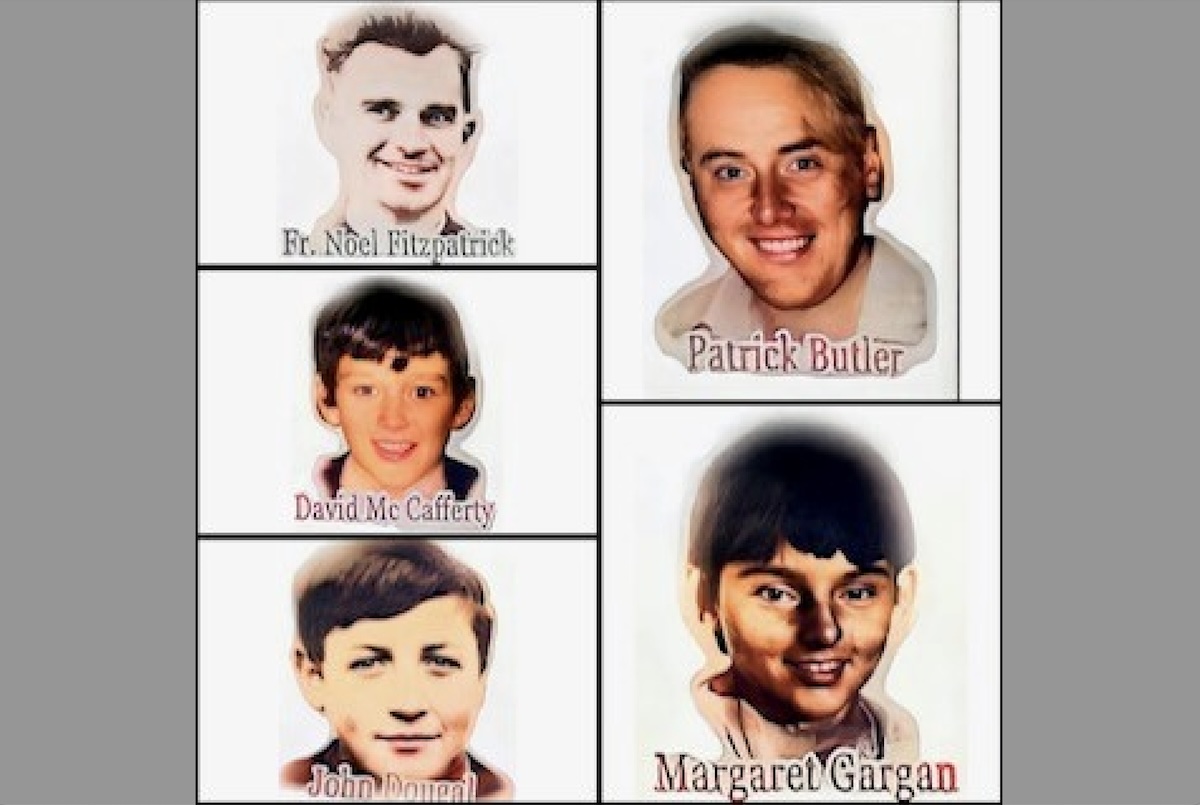
The British Ministry of Defence has again been criminalising the people of Springhill in West Belfast in its efforts to deflect an inquest from its investigation into the massacre.
On the 9th of July, 1972 the British Army’s Parachute Regiment brutally gunned down and killed five people on the streets of Springhill and Westwork in West Belfast, wounding many others.
Those who were killed were three teenagers, 13-year-old Margaret Gargan, 15 year-old David McCafferty and 16-year-old John Dougal, parish priest Fr Noel Fitzpatrick and another local man, Patrick Butler.
Relatives for Justice, a human rights charity which supports victims and survivors of the conflict, has been supporting the families involved.
At the inquest, which has been ongoing since February and which resumed earlier this month, civilian witnesses are being heard, while military evidence is due to start in January.
Counsel for the British military, Joseph Aiken, was condemned for his questioning of civilian witness Martin McShane, who was asked if he knew the people who were mentioned on a plaque that was erected in the Springhill area.
The plaque and especially the wording on the plaque, ‘In proud remembrance of all those who give assistance to the republican cause’ was used by Aiken to try and make the case that the entire Springhill community was assisting the Provisional IRA in their armed attacks on the British Army.
Aiken said: “I am trying to establish where the people on the plaque lived in the area and were they involved or knew about the incidents and the shooting at the army.”
The questioning by the MoD about the names on a plaque was strongly criticised by counsel for the families, Malachy McGowan, who said: “The way this questioning is being presented to the witness is that identifying names on the plaque is in some way naming them or associating them with an illegal organisation.”
On Tuesday, the inquest also heard traumatic evidence of civilians having to carry the body of 13-year-old Margaret Gargan whilst coming under heavy gunfire from the British army
Anthony Meenan was only 19 years old at the time and he told the inquest how he attempted to get to Margaret’s body after she was shot dead outside his home in the Westrock area.
Minutes before his 16-year-old sister Elizabeth was sitting talking with Margaret along with her friend Rosemary when the British army shot her dead.
Anthony was at home at the time, and he remembered his sister coming into the house screaming about Margaret. He went out to see what was happening.
“There was a lot of gunfire outside and I used our hedge as cover to try and get to Margaret who was lying outside our house. I could not reach her as she was lying out on the path and there was a lot of shooting taking place.
“A neighbour who lived opposite me shouted to me not to go out as there was a lot of gunfire. I do not have any recollection as to what happened after that, I’ve no memory of it.”
He remembered his father coming out of the house with a blanket or a sheet to put over Margaret. Anthony left the house to tell Margaret’s parents what had happened. On the way he stopped to talk to a man driving a car with a priest in the passenger side. “I asked the priest to come round to my house as a girl had been shot. I also remember seeing a car up the street with the driver’s door open and a person lying on the ground beside the car. The priest told me to go back round to my house. I went back to my house and Margaret’s body had been moved into the garden. They were trying to get Margaret to the hospital, but no ambulances were coming into the area.”
He then told the inquest that he and others had to carry Margaret’s body from the house to Brittons Drive on a corrugated sheet. There they saw a man driving a mini car and flagged him down.
“We put Margaret’s body into the car and took her to the Royal Victoria Hospital (RVH). I knew Margaret as she would have been at our house with my sisters.”
Another witness, Katherine (Kate) Donnelly, told the inquest how she remembered seeing Father Fitzpatrick and Paddy Butler walking past her home. Both of them were later fatally shot and Father Fitzpatrick’s body was brought into her house.
She believed he had been shot in the neck and he looked like he was drawing his last breath.
Mother Theresa’s nuns came to the house to try and revive Father Fitzpatrick. She recalled looking out the window of her house and seeing Paddy Butler’s body lying on the ground outside.
Canon Murphy arrived at the house and gave Father Fitzpatrick the last rites. An ambulance later took Father Fitzpatrick’s body from her house in the ambulance, Paddy Butler’s body was also taken away in an ambulance. Father Donnelly then came to the house and gave absolution to everyone that was in the house that night. She did not see any gunmen shooting that night.
Another civilian witness to give evidence was Mary McVeigh, who recalled seeing the body of Paddy Butler lying on the ground a short distance from her home.
Counsel for the British Army asked her whether she saw anyone with weapons or if she knew of anybody who was a member of an illegal organisation. She said the only people she saw that day were people trying to save people’s lives.
She also said she wanted to thank Paddy Butler, David McCafferty and Father Fitzpatrick for their bravery in trying to protect people that day.
The inquest continues.
![[Irish Republican News]](https://republican-news.org/graphics/title_gifs/rn.gif)
![[Irish Republican News]](https://republican-news.org/graphics/title_gifs/harp.gif)

